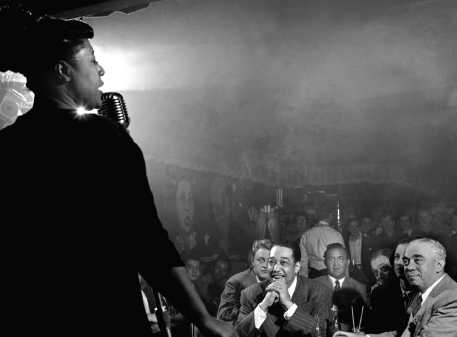Duke Ellington, “Conga Brava” (1940)

The tune used in “Conga Brava” was written by Ellington together with his Puerto Rican sideman Juan Tizol. (A conga is a dance of Afro-
Section b is played by the brass choir, with a speedy low clarinet cutting in. The rhythm section switches from a Latin beat to a typical jazz backbeat duple meter. The music begins to swing hard, as the trumpets remove their mutes.
Next, Ben Webster on tenor sax gets his turn with the tune. He sounds genuinely spontaneous; he probably never again improvised around this melody in just this way. After he has gone through a and a, the muted brass come in again with a lively variation of b.
“My band is my instrument.”
Duke Ellington — though he was a first-
Webster has strayed far from the tune, so it is good to hear the third appearance of the tune in its original form (more or less), now on the reed choir (saxophones). This time the interpolations are by sideman Rex Stewart on trumpet. And this time, after a single a, there comes an extraordinary brass-
At the piano, Duke gives a quiet signal for this brass episode before it starts; he also plays a single, hardly audible note in the middle of the episode, as though to remind us who is in charge. The piece ends as it started, with the tune played by Tizol, but it fades halfway through.
How strange to be back to the rather still and mournful conga melody, with its Latin beat! All that exhilarating jazz activity that blew up so suddenly and has now been cut off — was it some kind of dream? Only a master of musical form like Ellington could make you think of such questions after a mere three minutes of music.
LISTEN
“Conga Brava”
| 0:04 | a a | Trombone |
| 0:45 | b | Brass and clarinet |
| 0:59 | a′ a′ | Sax |
| 1:39 | b | Muted brass |
| 1:47 | a | Reed choir (with trumpet) |
| 2:07 | b′ | Brass choir |
| 2:32 | a | Trombone |